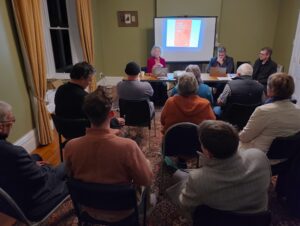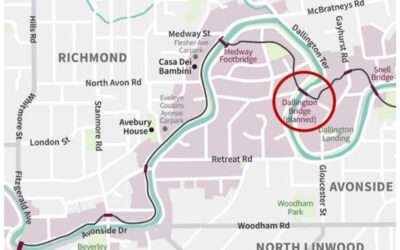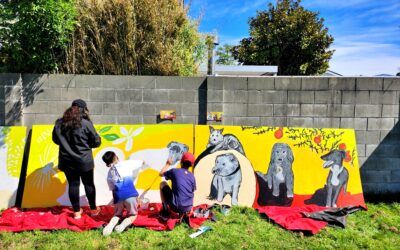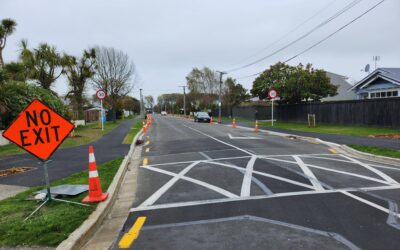RRBA Greater Christchurch Spatial Plan Submission
From the Christchurch City Council:
Draft Greater Christchurch Spatial Plan
The Greater Christchurch Spatial Plan will provide a blueprint for how we will accommodate future population and business growth in our sub-region.

Over the past 15 years, Christchurch and surrounding towns have grown rapidly. By 2050, more than 700,000 people are projected to be living in the Christchurch, Selwyn and Waimakariri districts – 30% more than there are today, with the population potentially doubling to 1 million people within the next 60 years, if not earlier.
Collective effort is required to increase resilience to natural hazards and climate change, improve access to employment, education and housing, reduce carbon emissions, and create a sustainable and prosperous future.

RRBA’s July AGM was followed by a presentation from T.Tierney, M.Stevenson and B.Rhodes who are working on the “Greater Christchurch Spatial Plan,” developing a plan for the future for the Christchurch, Selwyn and Waimakariri regions
July 2023
RICHMOND RESIDENTS’ and BUSINESS ASSOCIATION SUBMISSION
GREATER CHRISTCHURCH SPATIAL PLAN
In this submission we have specifically targeted areas which need consideration within the scope of the greater Christchurch spatial plan as they could be viewed through the lens of the residents and general community of Richmond, an inner city suburb.
Richmond is one of Christchurch’s oldest suburbs dating back to the early 1900’s. It has a complex population of socio-economic and ethnic groups, of modern and heritage type buildings, of various amenities and ethnic groups, and a high number of social housing complexes. It enjoys the existence of a number of voluntary organisations who, between them, are assisting the community and the city to address many of the needs surrounding the social climate, the physical environment and the natural environment. There is a strong sense of community existing in a suburb where many local events and other initiatives provide opportunities for participation, learning and socialisation. A notable role player in this work is “WeAreRichmond” the authors of this submission.
We endorse the need to develop a long term spatial plan to ensure the survival of, and the existence of a thriving community embracing Christchurch City and the outlying districts of Waimakariri and Selwyn. The need to develop holistic approaches to such issues as population growth, provision of infrastructure, heritage preservation, conservation, housing, area amenities, cultural partnerships and transport systems in sustainable and collaborative ways is absolutely vital when planning for our current and future generations.
SPECIFIC DISCUSSION POINTS
Protect, restore and enhance the natural environment, with particular focus on te ao Māori, the enhancement of biodiversity, the connectivity between natural areas and accessibility for people. Item 3 – Spatial Plan
Avoid development in areas with significant natural values
- We do not want to see development in areas with significant natural values. Some of the land in our suburb lies within the Red Zone created after the earthquakes and this has provided us with an opportunity to play a part in restoring this land to its natural state, thus providing long term ecological benefits while respecting the cultural heritage of the original inhabitants. There have already been efforts made to reclassify some red zone land to enable housing development. We want the long term considerations of ecological sustainability to override any such applications now and in the future.
Prioritise the health and wellbeing of water bodies
- Consideration must be given to protecting our waterways not just in Richmond but in those which are part of the greater Christchurch hydro system. Local groups have been very active in restoring natural freshwater habitats along the reaches of the Avon/Otākaro River and feeder streams and we do not want to lose the progress made because of a lack of consideration for ‘downstream’ waterways health when creating ‘upstream projects’ in the future.
Enhance and expand the network of green spaces
- Richmond is well served by green spaces but we are endeavouring to improve the vegetation coverage even further by encouraging the Council to plant more roadside trees and developing food chain links for our native birds and animals through a series of planned planting programmes. These must be acknowledged and supported with continued Council based resources.
Key Moves
A strengthened network of urban and town centres
- Consideration should be given to a facilitation process which enables a linking up of urban communities (suburban) to provide opportunities for discussing common concerns, and for the implementation of common ideas for continued development of each area. This would provide valuable cross-community participation, help maintain a sense of holistic unity in any wide regional planning and contribute to successful Greater Christchurch/local Council/community group government plan delivery.
A mass rapid transit system
- Consideration must be extended to the ‘last half kilometre’ of any transit system. Inner city suburbs will, because of their geographic locality, be part of ‘linking’ transit provider routes.
- The impacts of regular transport movements through inner city suburbs often characterised by narrow streets and congested commercial precincts must be considered when planning an overall transit strategy including the major factors like embarkation/disembarkation points so important in any linked rail/rail/light rail/bus systems.
Enable diverse and affordable housing in locations that support thriving neighbourhoods that provide for people’s day-to-day needs. Item 4 – Spatial Plan
Ensure sufficient development capacity is provided or planned for to meet demand
- Current HRD and MRD guidelines should be revised to acknowledge the overall effects on the surrounding infrastructure and the accumulative effect on social amenities. Is there a balance to be considered when striving for an increased population and the area which will ultimately support that increased population? The terms ‘capacity to thrive’, ‘ability to thrive’, ‘capacity to contribute to the wider community’, ‘ability to contribute to the wider community’, and importantly, ‘sustainability’, should be central to all future planning discussions.
Focus, and incentivise, intensification of housing to areas that support the desired pattern of growth
- The pattern of growth should not focus solely on increased capacity to house an increased population. The critical capacity levels of supporting infrastructures must be considered so that housing intensification and population growth do not get out of alignment when increased capacity is being proposed. We would consider Richmond to be an example of an area which is at capacity in terms of population growth and density and that the pressure on the capacity of its supporting infrastructure is threatening its ability to thrive.
Provide housing choice and affordability
- We would consider that Richmond has a balance of the availability of mixed housing types but that the spread of that availability has been compromised by the extensive building of multi-level homes/apartments in concentrated areas of the suburb. The balance of space between all different housing types must be considered more by the planning authorities when granting resource consents.
- Current heritage plans and special amenity conditions should be preserved.
- The current intensity of social housing units, particularly in South Richmond should also be considered when viewing the overall housing capacity spectrum.
Deliver thriving neighbourhoods with quality developments and supporting community infrastructure
- We would strongly suggest that all future buildings have a long and sustainable future facilitated by modern design, governed by climate change considerations, and the individual place within the overall jigsaw of the whole Richmond community.
- Consideration of the physical and social needs of the existing and new residents must be considered so that preservation and awareness of cultural values and opportunities for vibrant social interactions are preserved.
- The local volunteer groups operating in Richmond generally enjoy good support from the community and local government groups. These relationships must be fostered and encouraged to grow through genuine partnerships rather than through ad hoc conversations and current bureaucratic procedures.
Provide space for businesses and the economy to prosper in a low carbon future. Item 5, Spatial Plan
A well connected centres network that strengthens Greater Christchurch’s economic competitiveness and performance, leverages economic assets, and provides people with easy access to employment and services
- Concern is often expressed in Richmond about the range of services and shopping facilities. These concerns cover the range of shops, an overabundance of certain types of shops and the complete absence of others. While the type of retail outlet is largely determined by the owner/tenant arrangements, thought could be given to ways to encourage a more diverse range of retail outlets and establishment of premises for professional services. This diversity would contribute towards the community’s ability to develop some degree of self-sustainability and the ability to thrive in this changing world.
Provision of strategic infrastructure that is resilient, efficient and meets the needs of a modern society and economy
- As stated earlier, Richmond is one of Christchurch’s oldest suburbs and maintenance of its services infrastructure was largely neglected for many years until the earthquakes exposed many weaknesses and identified requirements to update infrastructure, particularly roading and footpaths. We do not want to see practices reflecting a ‘pothole politics’ mentality when work projects are planned. We also suggest the role that local residents can play should be given higher priority so that we can establish a future proof and resilient community as we move into an unpredictable future.
Prioritise sustainable transport choices to move people and goods in a way that significantly reduces greenhouse gas emissions and enables access to social, cultural and economic opportunities. Item 6, Spatial Plan
Enable safe, attractive and connected opportunities for walking, cycling and other micro mobility
- There is opportunity for the continued development of attractive functional walkways and cycleways in Richmond. A thorough look at the Stanmore Shopping Precinct between Draper Street and North Avon Road could inspire visions of a shopper friendly space with endless innovative design and landscaping possibilities while still acknowledging the importance of the road as a commuter link.
- Cross Richmond links have been explored and community driven walks established to
generate interest and pride in the suburb’s natural features and its heritage. Continued support for these ventures is desirable.
Develop innovative measures to encourage people to change their travel behaviours
- Consideration must be given to the pace of change so that a gradual assimilation to the desired outcomes is achieved within a reasonable time span eg. the disjoint created when erecting housing developments with few garaging facilities. People do not abandon their cars overnight and therefore, strategically interim transition planning is important to smooth any such processes.
- The residents of Richmond are already demonstrating innovation in their methods of travel by using a variety of conveyances; scooters, skateboards, etc. Encouragement of this developing trend could be enhanced by continuing to address the needs of these innovative commuters by establishing safe passages through the suburb’s streets for local residents and city-bound and eastern commuters.
WE ARE RICHMOND
Dallington Bridge notice
Information around the new bridge being built as part of the City to Sea pathway. This is due to start on site end of April.
Petrie Park Mural Painting Event 3
Our second Petrie Park mural painting day with the community was a success, and even the dogs came along!
Final Roadworks Update for Nicholls Street 30
As we approach the final stage of the project, Higgins would like to take a moment to express our sincere gratitude for your patience, understanding, and support throughout the entire process. We know that the disruptions and delays were not always easy, and we truly...



